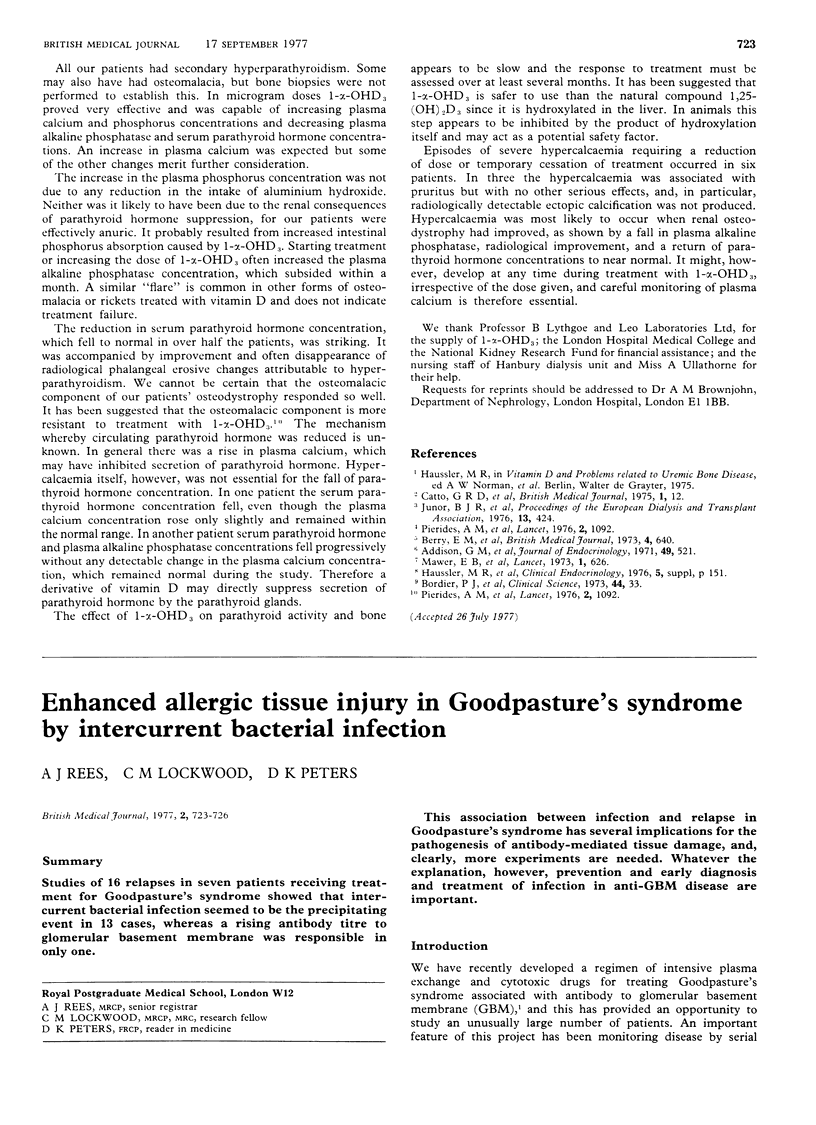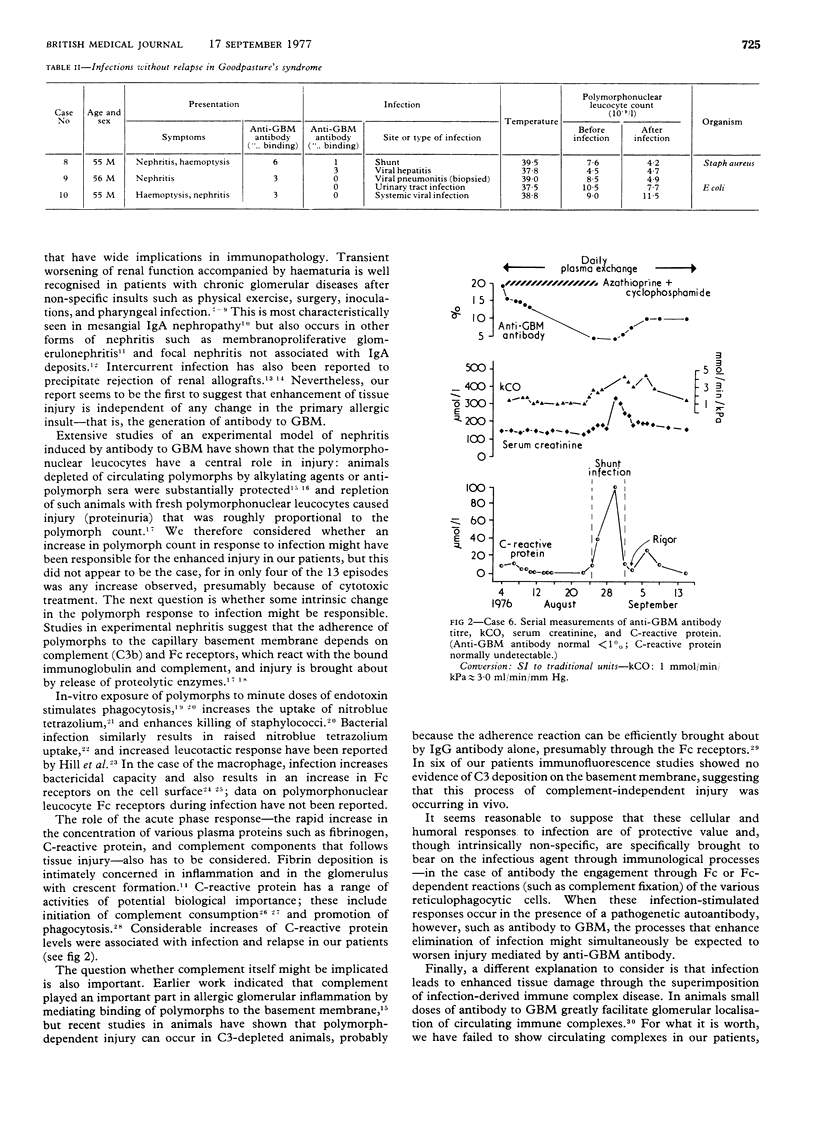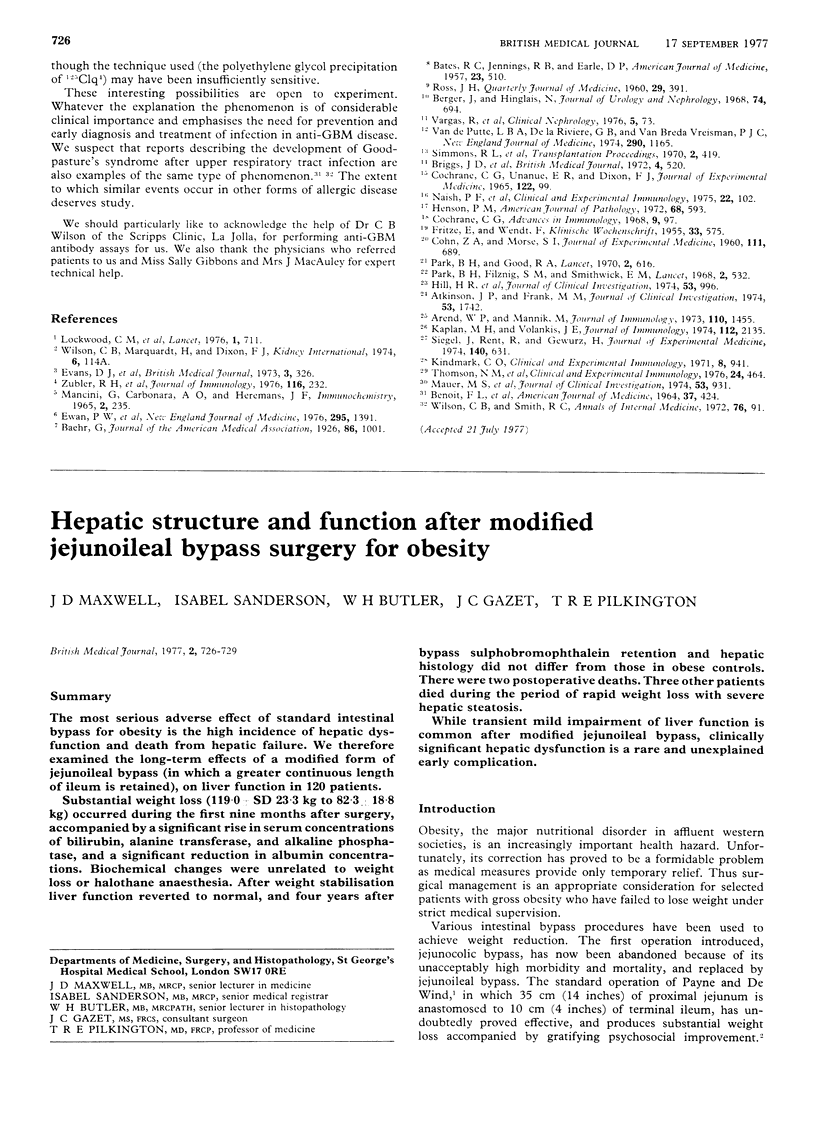Abstract
Studies of 16 relapses in seven patients receiving treatment for Goodpasture's syndrome showed that intercurrent bacterial infection seemed to be the precipitating event in 13 cases, whereas a rising antibody titre to glomerular basement membrane was responsible in only one. This association between infection and relapse in Goodpasture's syndrome has several implications for the pathogenesis of antibody-mediated tissue damage, and, clearly, more experiments are needed. Whatever the explanation, however, prevention and early diagnosis and treatment of infection in anti-GBM disease are important.
Full text
PDF



Images in this article
Selected References
These references are in PubMed. This may not be the complete list of references from this article.
- Arend W. P., Mannik M. The macrophage receptor for IgG: number and affinity of binding sites. J Immunol. 1973 Jun;110(6):1455–1463. [PubMed] [Google Scholar]
- Atkinson J. P., Frank M. M. The effect of Bacillus Calmette-Guerin-induced macrophage activation on the in vivo clearance of sensitized erythrocytes. J Clin Invest. 1974 Jun;53(6):1742–1749. doi: 10.1172/JCI107726. [DOI] [PMC free article] [PubMed] [Google Scholar]
- BATES R. C., JENNINGS R. B., EARLE D. P. Acute nephritis unrelated to group A hemolytic streptococcus infection: report of ten cases. Am J Med. 1957 Oct;23(4):510–528. doi: 10.1016/0002-9343(57)90223-1. [DOI] [PubMed] [Google Scholar]
- Ewan P. W., Jones H. A., Rhodes C. G., Hughes J. M. Detection of intrapulmonary hemorrhage with carbon monoxide uptake. Application in goodpasture's syndrome. N Engl J Med. 1976 Dec 16;295(25):1391–1396. doi: 10.1056/NEJM197612162952502. [DOI] [PubMed] [Google Scholar]
- FRITZE E., WENDT F. Zum Wirkungsmechanismus bakterieller Lipopolysaccharide. II. Die Phagocytoseaktivität menschlicher Blutgranulocyten unter dem Einfluss bakterieller Lipopolysaccharide in vitro. Klin Wochenschr. 1955 Jun 15;33(23-24):575–576. doi: 10.1007/BF01473769. [DOI] [PubMed] [Google Scholar]
- Kindmark C. O. Stimulating effect of C-reactive protein on phagocytosis of various species of pathogenic bacteria. Clin Exp Immunol. 1971 Jun;8(6):941–948. [PMC free article] [PubMed] [Google Scholar]
- Mancini G., Carbonara A. O., Heremans J. F. Immunochemical quantitation of antigens by single radial immunodiffusion. Immunochemistry. 1965 Sep;2(3):235–254. doi: 10.1016/0019-2791(65)90004-2. [DOI] [PubMed] [Google Scholar]
- Park B. H., Fikrig S. M., Smithwick E. M. Infection and nitroblue-tetrazolium reduction by neutrophils. A diagnostic acid. Lancet. 1968 Sep 7;2(7567):532–534. doi: 10.1016/s0140-6736(68)92406-9. [DOI] [PubMed] [Google Scholar]
- Park H. H., Good R. A. N.B.T. test stimulated. Lancet. 1970 Sep 19;2(7673):616–616. doi: 10.1016/s0140-6736(70)90207-2. [DOI] [PubMed] [Google Scholar]
- Siegel J., Rent R., Gewurz H. Interactions of C-reactive protein with the complement system. I. Protamine-induced consumption of complement in acute phase sera. J Exp Med. 1974 Sep 1;140(3):631–647. doi: 10.1084/jem.140.3.631. [DOI] [PMC free article] [PubMed] [Google Scholar]
- van de Putte L. B., de la Riviere G. B., van Breda Vriesman P. J. Recurrent or persistent hematuria. Sign of mesangial immune-complex deposition. N Engl J Med. 1974 May 23;290(21):1165–1170. doi: 10.1056/NEJM197405232902104. [DOI] [PubMed] [Google Scholar]



